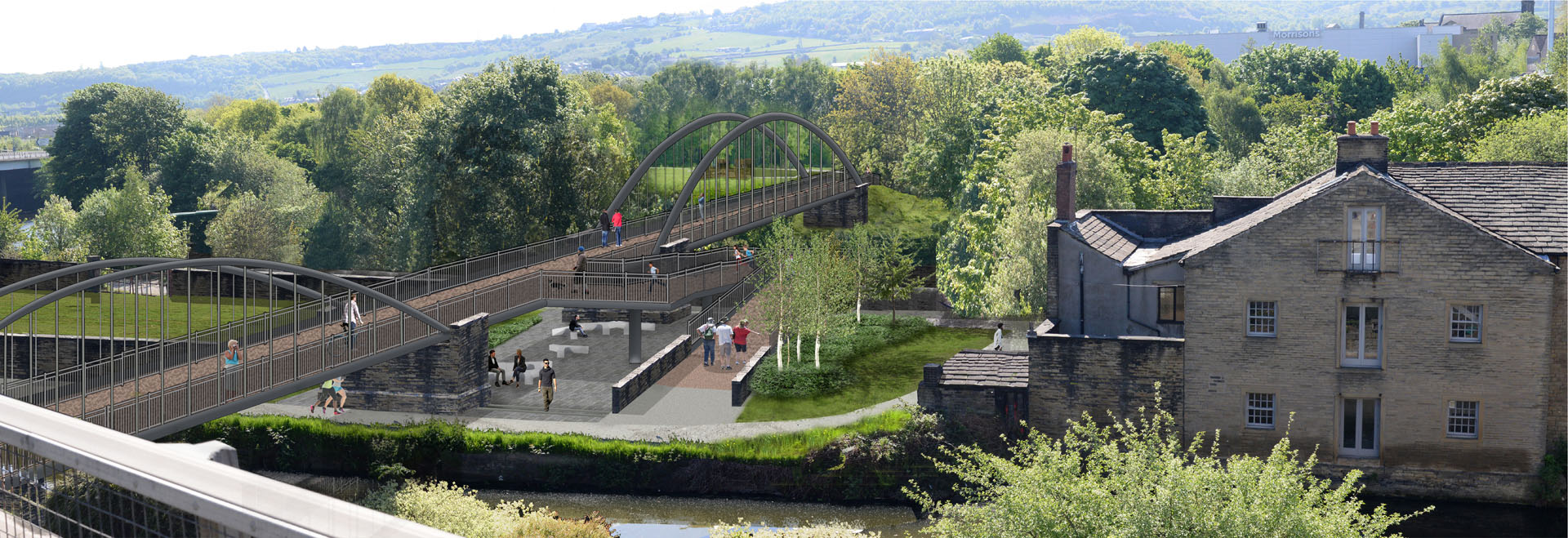
Walking and cycling access improvements in Elland
Elland is set to welcome a new train station - bringing fresh momentum to active travel in the town. Our team played a key role in shaping the surrounding access improvements, helping to create safer, greener connections for walkers and cyclists. From bridge design to biodiversity strategy, this was a deeply collaborative and technically ambitious project that sets a new standard in sustainable infrastructure.
- Location: Elland, West Yorkshire
- Client: Calderdale Council
- Services Environment and Sustainability
Unlocking active travel potential in Elland
The town of Elland in West Yorkshire, situated between Halifax and Huddersfield, received planning permission for a new train station in 2023. To accompany this new development, we prepared and submitted the now-approved application for a suite of access works around Elland for Calderdale Council to facilitate safe walking and cycling to and from the new station. These works included two new bridges over the Calder Navigation Canal and River Calder, widened towpaths, pedestrian crossings, and landscape works to the park.
Although not subject to the statutory 10% Biodiversity Net Gain under the Environment Act 2021, the council were keen to lead by example by providing significant, measurable net gain. Biodiversity Net Gain was in its infancy at the time of submission, and our team addressed several complexities to bring the scheme to a positive determination. This included the implications of having a large red line boundary close to both the river and the canal. This impacted the percentage Biodiversity Net Gain units for watercourses, despite not touching the watercourse in the scheme.
Balancing design practicalities with ecological ambition
The red line boundary for the site was carefully honed to encapsulate the development area more efficiently. Meanwhile, the landscaping of the park underscored the difference in aims between the ecology side and the landscape side of the design. Native species in the park would provide a higher Biodiversity Net Gain score. However, ornamental species would be more appropriate for the formal setting and management of the park. They would also be gentler for use by small children compared to a wilder native species. This was resolved by using ornamental species around the play area in the park and adding native trees within hedgerows to boost the Biodiversity Net Gain score.
Greener, better connected communities
Through significant collaboration, organisation, problem-solving and negotiation between our discipline teams and the Council, the scheme now has planning permission. This significant project milestone paves the way for a more connected town, boosting its economic potential while championing sustainable transport.

If you’d like to learn more about this project or explore how our Environment and Sustainability services can support your next project, contact us here.



